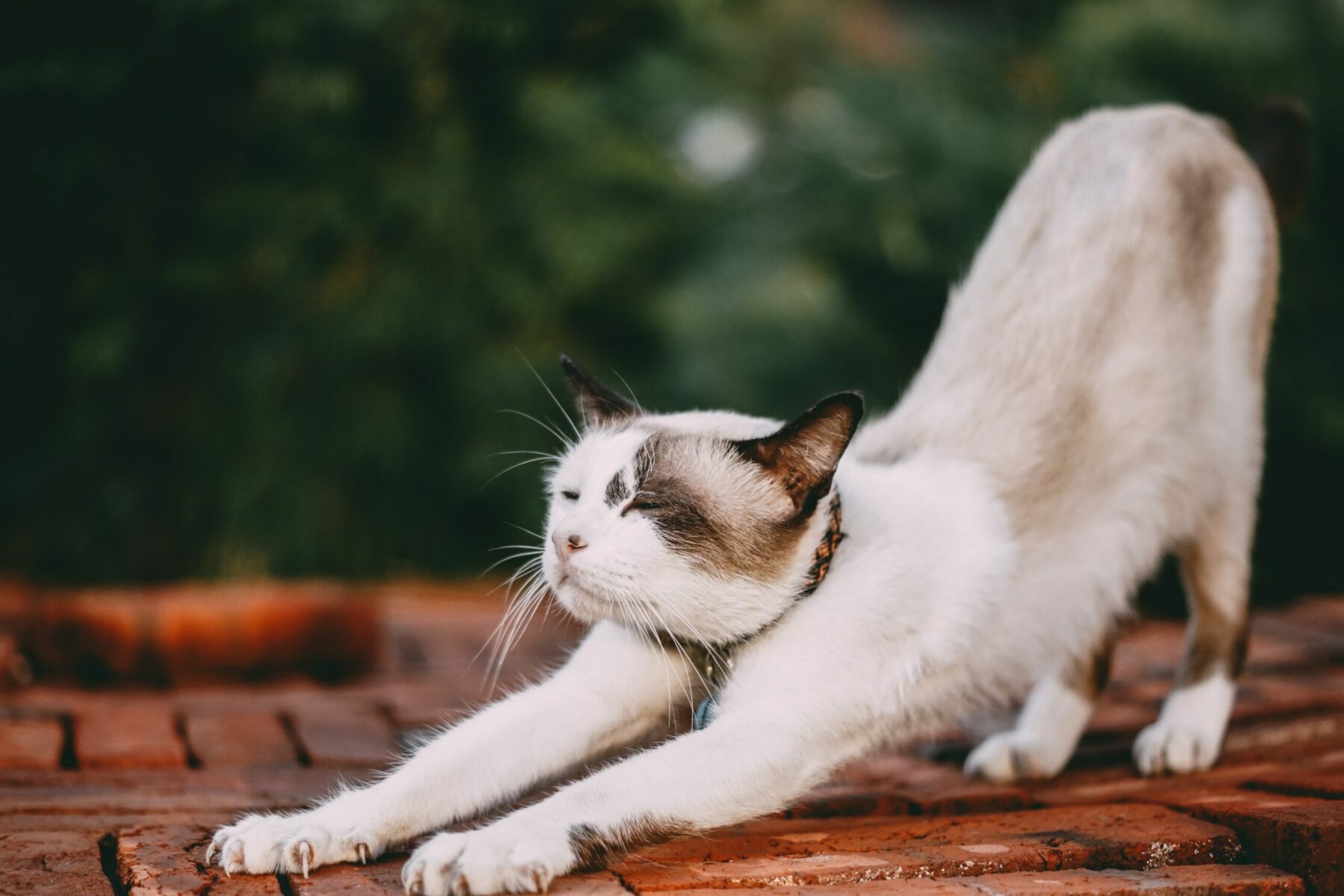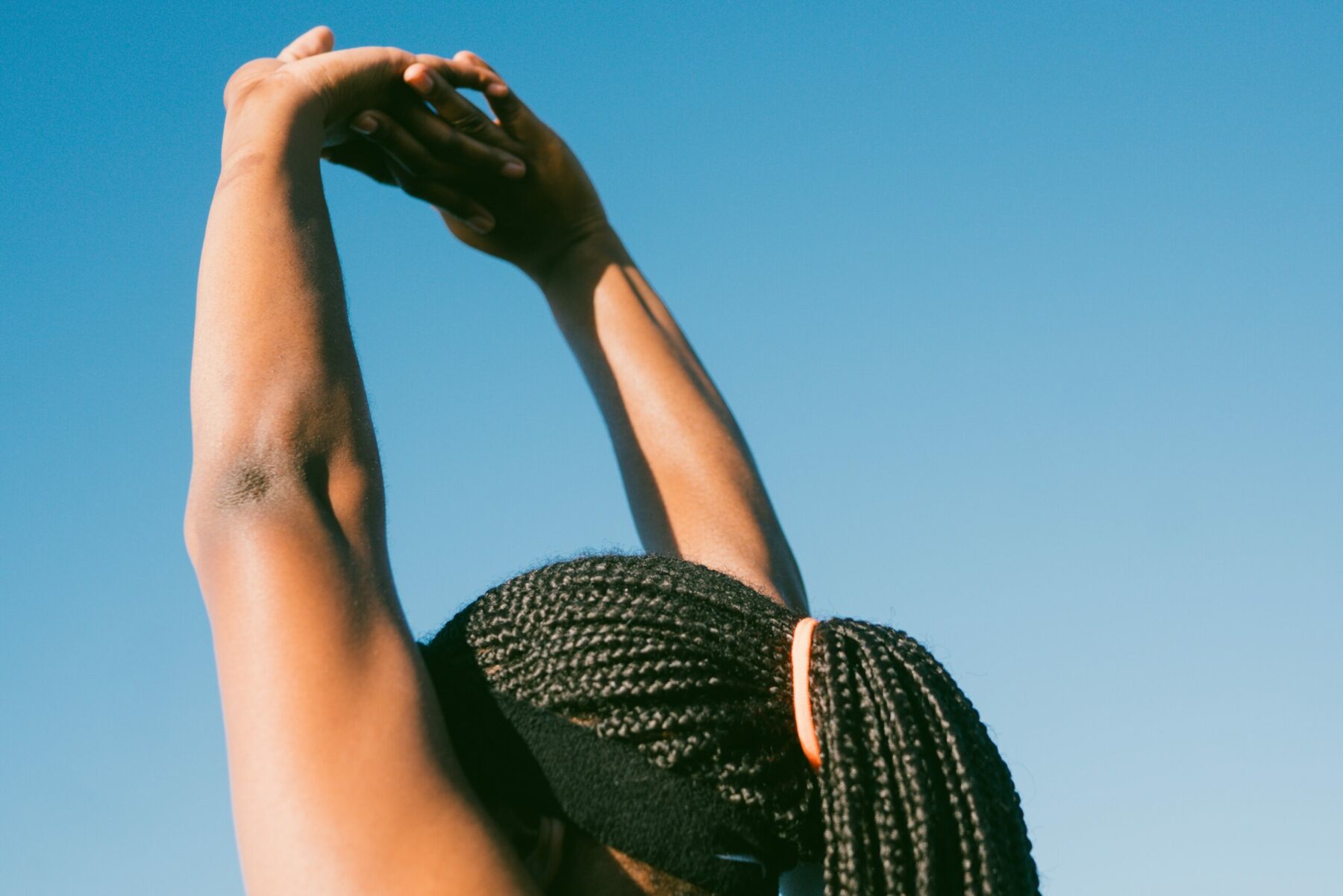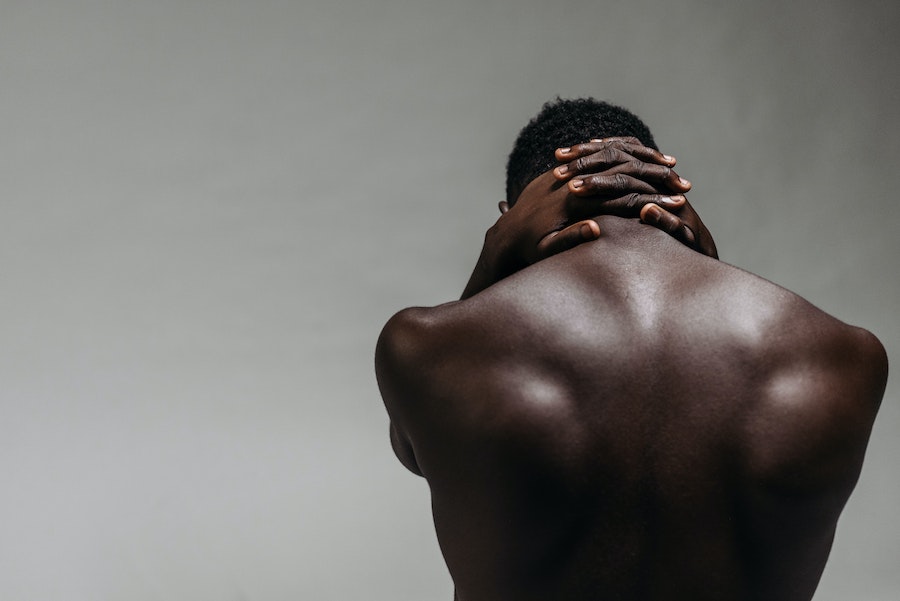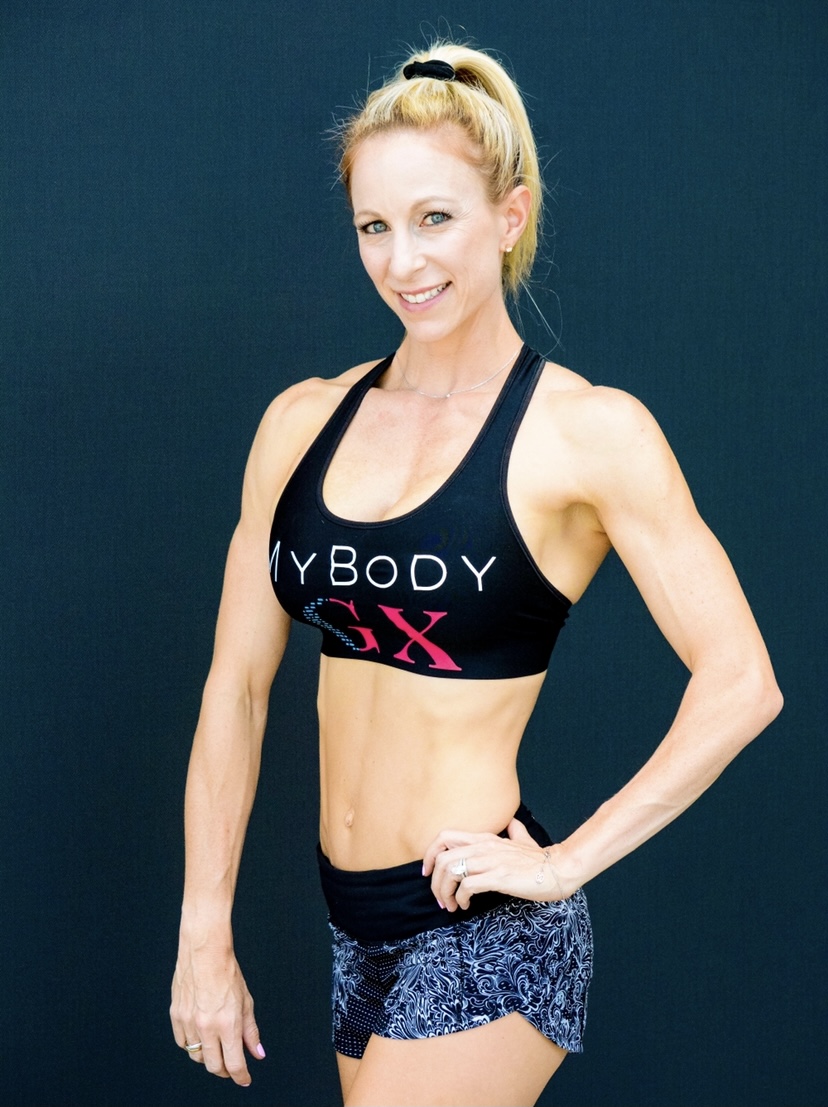5 Easy Stretches to Improve Posture

Our lifestyle requires us to sit at a computer, desk or table to return emails, have conversations and shop. We hunch over our phones responding to texts. We drive with our shoulders hunched forward in the car. Because of the bent-over posture we, as a society, have adopted with the influence of technology, we need to understand how to combat its effects.
Here are some muscle groups that affect posture and exercises to use for improvement.
The Front

Pectoralis major and minor, anterior deltoid and biceps are all muscles located in the front of the body. These muscles become shortened when working at a computer, carrying heavy objects or driving. To open these muscles, stretching is key.
Bent Arm Wall Stretch: With arms at a 90-degree angle, place the forearm against the wall with biceps parallel to the floor. Twist the body away from the arm and wall until a light stretch is felt across the top of the pectoral wall and into the anterior deltoid. Hold for 15 to 30 seconds. Take a breath, and twist a little deeper into the stretch. Hold again for 15 to 30 seconds. Switch sides and repeat. Repeat on both sides 3 to 5 times.
WHY: The primary muscles used are the pectoralis major and minor along with the anterior deltoid. Opening and stretching the pectoral muscles releases the tension that folds the shoulders in and forward. The hunched-over posture from computer work and driving produces strain on the neck and upper back and pulls from the front. By stretching these muscles, it allows the back muscles, like the anterior deltoid, to pull the shoulders back and down. This movement can be performed at the office or at home for a quick release of the chest muscles.
Above-the-Head Chest Stretch: Seated or standing, interlace fingers behind the head with elbows flared out at ear level. Squeeze shoulder blades together opening the chest. Hold 15 to 30 seconds. Move hands to the base of the neck, and squeeze shoulder blades together, opening the chest again for 15 to 30 seconds. Finally, move hands to the top of the head, and squeeze shoulder blades together, opening the chest again for 15 to 30 seconds. Repeat each hand placement 2 to 4 more times.
WHY: The primary muscles are the pectoralis major. This stretch elongates and lengthens the chest muscles allowing for a healthier posture to feel more comfortable. Changing hand positions, up and down the head, fully lengthens the chest muscle across the chest. This movement can be performed while sitting at a desk or in the car.
The Back

Rear deltoids, trapezius muscles at the base of the neck and rhomboids are located on the back of the body. Building and strengthening these muscles create stabilizers that play a key role in posture and help prevent injury.
Bent-Over Rear Delt Fly with Dumbbells: Hinging at the hips with soft knees and a straight back and proud chest, hold dumbbells down with hands facing in line with the chest. Keeping arms straight, perform a reverse fly, bringing dumbbells up and out until they’re in line with the shoulders. Squeeze shoulder blades at the top. Slowly lower the weights back down. Repeat 10 to 15 times for 3 to 5 sets at a light-to-moderate weight.
WHY: The primary muscles used are the posterior deltoids, or rear deltoids, along with rhomboids and trapezius muscles. These muscles on the back of the shoulders and upper back pull the shoulders back and down. This assists in preventing shoulders from rolling forward in the hunched position. This movement can be done with light hand weights or even water bottles, as the movement doesn’t require much weight to be effective.
Band or Cable Face Pulls: With the cable or band placed at an elevated position above head level, grab the handles with palms down facing the floor. Step back until there is tension. Pull the cable or band toward the face at eyebrow level, keeping elbows higher than shoulder level. Pull back until hands are in line with the ears. Slowly return to the starting position. Repeat 10 to 15 times for 3 to 5 sets at a light-to-moderate weight.
WHY: The primary muscles worked are the rhomboids and trapezius muscles with some posterior delt movement. These central upper back muscles support the posterior deltoid muscles. The stronger these muscles are, the less likely a tight chest will pull the shoulders forward. This is a great gym or home movement that can be performed with graduating weight as the muscles become stronger.
Prone Reverse Flys: Laying on the floor or bench face down, extend your arms out in line with the shoulders. With hands facing forward and thumbs toward the sky, squeeze the shoulder blades together lifting the arms up off the floor. Relax the shoulder blades returning the hands back to the floor, or try to hover before repeating the movement to keep tension on the rear delt. This movement can be done with or without weight with the focus on engaging and strengthening the rear delt muscle. Repeat 10 to 15 times for 3 to 5 sets with very light weights or 15 to 20 times for 3 to 5 sets without weights.
WHY: The primary muscles targeted are the posterior deltoids along with the rhomboid and trapezius muscles. Strengthening these muscles pulls the shoulders back, holds the upper back into a healthy erect position and helps prevent injury. This movement is also great because it can be performed anywhere and without weights or equipment.
–
Try these movements to keep your muscles tension-free, prevent injuries and create better body balance. The more you stretch and focus your movements, the better your posture.
About the Author

Coach Kati Epps is the founder of MyBody GX with a background in chemistry from Colorado State University, an ACE-certified personal trainer, health coach and nutrition specialist.






